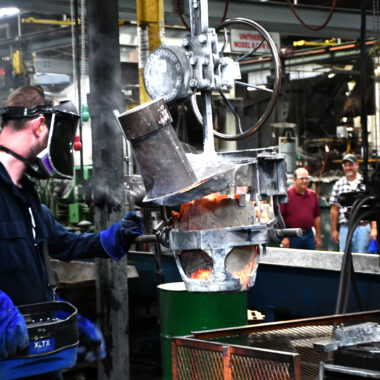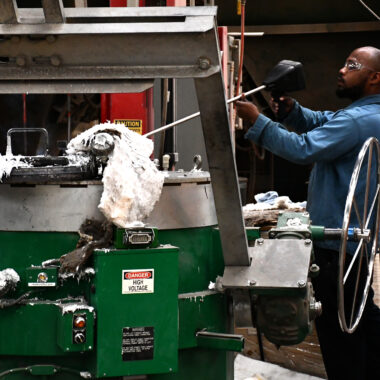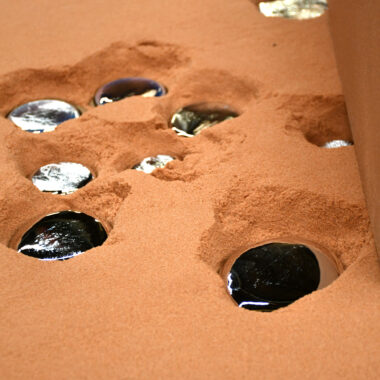Crafting Excellence: Exactly How to Accomplish High-Quality Aluminum Castings Every Single Time
In the world of aluminum casting, the quest of perfection is a continual trip that calls for a thorough approach and a keen understanding of the details included. Attaining regular top notch aluminum castings requires a comprehensive grasp of the processes, from choosing the appropriate alloy to implementing specific mold and mildew designs and diligently regulating casting specifications.
Recognizing Aluminum Casting Procedures
Light weight aluminum casting procedures, necessary in the manufacturing sector, entail the intricate transformation of molten light weight aluminum into solid types with a collection of carefully regulated actions. Comprehending these procedures is critical to attaining premium light weight aluminum castings consistently - about aluminum casting. The key methods utilized in light weight aluminum spreading are die casting, sand spreading, and financial investment spreading

Each of these processes has its advantages and is picked based on factors like intricacy, quantity, and desired surface of the aluminum spreading. about aluminum casting. Understanding the ins and outs of these techniques is crucial for manufacturers intending to generate high-quality light weight aluminum spreadings constantly
Selecting the Right Aluminum Alloy
Selecting the proper light weight aluminum alloy is an important decision in the manufacturing of high-grade light weight aluminum castings. When selecting a light weight aluminum alloy for casting, it is vital to take into consideration the particular requirements of the application to make certain ideal efficiency.
Among one of the most typically used aluminum alloys for casting is A356. This alloy uses excellent castability, high stamina, and excellent rust resistance, making it ideal for a broad variety of applications. Conversely, 6061 aluminum alloy is preferred for its premium weldability and good mechanical residential or commercial properties. For applications requiring high stamina, 7075 light weight aluminum alloy is a popular choice because of its exceptional strength-to-weight ratio.
Along with mechanical homes, factors to consider such as expense, schedule, and post-casting procedures ought to also affect the option of the appropriate light weight aluminum alloy. By meticulously evaluating these factors, manufacturers can ensure the production of high-grade light weight aluminum spreadings that satisfy the preferred specs.
Applying Correct Mold Design
Developing an effective mold layout is critical for making sure the effective manufacturing of top notch aluminum castings. Correct mold design plays a substantial function in accomplishing the desired features of the last product. To implement an effective mold design, elements such as product flow, cooling down prices, and part geometry should be thoroughly taken into consideration.
One secret her response aspect of mold and mildew layout is guaranteeing proper dental filling and solidification of the aluminum within the mold and mildew tooth cavity. This involves making runner and gating systems that promote smooth metal circulation and stop problems such as air entrapment or insufficient filling. In addition, incorporating air conditioning channels right into the mold style helps control solidification rates and lower the risk of porosity or contraction problems.

Controlling Spreading Parameters

Making Certain Post-Casting Top Quality Checks
To keep the top quality of light weight aluminum spreadings, complete post-casting quality checks are crucial. After the casting process is completed, it is essential to guarantee that the end products meet the desired requirements and criteria. One of the main top quality checks includes inspecting the surface finish of the castings to determine any kind of problems such as porosity, cracks, or surface area abnormalities. This visual examination is commonly supplemented by non-destructive screening methods like ultrasonic testing or dye penetrant examination to identify internal defects that might compromise the stability of the spreading.
Dimensional precision is another crucial element that needs to be validated throughout post-casting quality checks. Measurements of essential dimensions and tolerances ought to be taken to validate that the spreadings satisfy the called for specifications. Additionally, mechanical homes such as solidity, tensile stamina, and effect resistance might need to be examined with product testing to guarantee that the castings possess the required strength and resilience for their intended application.
Conclusion
In conclusion, achieving high-quality light weight aluminum spreadings needs a thorough understanding of the casting processes, picking the ideal alloy, creating molds properly, controlling casting parameters thoroughly, and performing post-casting quality checks carefully. By following these actions, producers can constantly produce light weight aluminum spreadings that meet the highest possible criteria of top quality and performance.
Achieving regular high-grade light weight aluminum castings requires a detailed grasp of the procedures, from choosing the appropriate alloy to executing exact mold layouts and diligently controlling spreading parameters. The key methods made use of in navigate to these guys aluminum spreading are die spreading, sand casting, and financial investment casting.
Financial investment casting, additionally understood as accuracy casting, entails producing wax patterns that are covered in ceramic to form mold and mildews.Picking the suitable light weight aluminum alloy is an essential decision in the manufacturing of high-quality aluminum spreadings.Guaranteeing specific control over casting specifications is important for preserving consistency and high quality in light weight aluminum spreading production.
Comments on “Dive Deep: Insights About Aluminum Casting Processes”